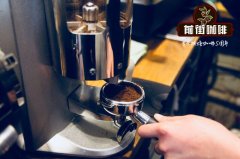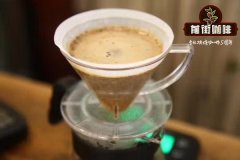Jamaica Coffee Practice Jamaica Coffee Origin Jamaica Coffee What is the taste

Professional coffee knowledge exchange more coffee bean information please follow the coffee workshop (Wechat official account cafe_style)
The history of Jamaican coffee actually began in France. King Louis XIV of France was interested in promoting coffee in the colonies with the aim of creating a French-controlled source of coffee. He got a living plant from the Dutch and propagated it in the botanical garden in Paris. In 1723, a French officer brought the descendants of three of the original plants from Paris to the French colony of Martinique, marking the arrival of coffee in the Caribbean. In 1728, the Governor of Jamaica brought back some coffee trees from Martinique and planted them at the foot of the St. Andrews parish. The cultivation of coffee eventually extended to the Blue Mountains. Coffee trees grow in cool climates and high-altitude mountains.
Coffee production in Jamaica flourished in the late 18th century, with as many as 600 plantations at the turn of the century. But coffee production fell sharply in the late 19th century due to a variety of factors, including a decline in labor resources and rampant disease. The quality of Jamaican coffee has also declined, so much so that Canada and the United States, the main importers of Jamaican coffee, have stopped importing the product. The coffee industry is so important to the Jamaican economy that the government intervened to regulate coffee processing and product sales, setting up a central coffee clearing house in 1944. The growers eventually set up their own regulatory bodies to improve and maintain the quality of Jamaican coffee. They set up the Coffee Industry Committee in 1950. The establishment of the committee promoted the production of coffee and restored the quality of this coveted coffee bean.
Coffee in Jamaica grows between 450m and 1700 m above sea level. Only coffee growing above 900 meters is called the Jamaican Blue Mountains. Coffee growing between 450 meters and 900 meters is called a high mountain, while coffee growing below 450 meters is called the highest mountain or low mountain. High altitude and wet thick clouds and shade create an environment in which the coffee fruit ripens slowly. This slow ripening process creates a rich sweetness, which is characteristic of Jamaican coffee.
Jamaica produces about 1% of the world's coffee. The recent increase in demand particularly from the Asian market has coincided with a significant decline in production due to the epidemic of leaf rust and the infestation of berry borers. In 2012, the Ministry of Agriculture of Jamaica allocated US $29 million to help restore coffee cultivation. But despite this support, forecasts show that production will fall short of demand in the next few years.
END
Important Notice :
前街咖啡 FrontStreet Coffee has moved to new addredd:
FrontStreet Coffee Address: 315,Donghua East Road,GuangZhou
Tel:020 38364473
- Prev

How do you drink Indian coffee? is Indian coffee good? the origin of Indian coffee beans
Professional Coffee knowledge Exchange more information on coffee beans Please follow the coffee workshop (Wechat official account cafe_style) Coffee was introduced to India in 1670 when a man named Babbuda went on a pilgrimage to Mecca and found this black coffee in Yemen. The story of Babbuda says that he tied coffee beans around his waist and smuggled them from Yemen to Mysore, India. At that time, put the green coffee
- Next

The characteristics of Java coffee beans how to handle Java coffee how about java Java coffee
Professional coffee knowledge exchange more coffee bean information please follow the coffee workshop (Wechat official account cafe_style) Arabica coffee was introduced to Java in 1699 and exported to Europe 12 years later in 1711. For the next 150 years, the harvest was good until coffee rust first hit the area in 1878. The Dutch grow Arabica at a higher altitude
Related
- Beginners will see the "Coffee pull flower" guide!
- What is the difference between ice blog purified milk and ordinary milk coffee?
- Why is the Philippines the largest producer of crops in Liberia?
- For coffee extraction, should the fine powder be retained?
- How does extracted espresso fill pressed powder? How much strength does it take to press the powder?
- How to make jasmine cold extract coffee? Is the jasmine + latte good?
- Will this little toy really make the coffee taste better? How does Lily Drip affect coffee extraction?
- Will the action of slapping the filter cup also affect coffee extraction?
- What's the difference between powder-to-water ratio and powder-to-liquid ratio?
- What is the Ethiopian local species? What does it have to do with Heirloom native species?

